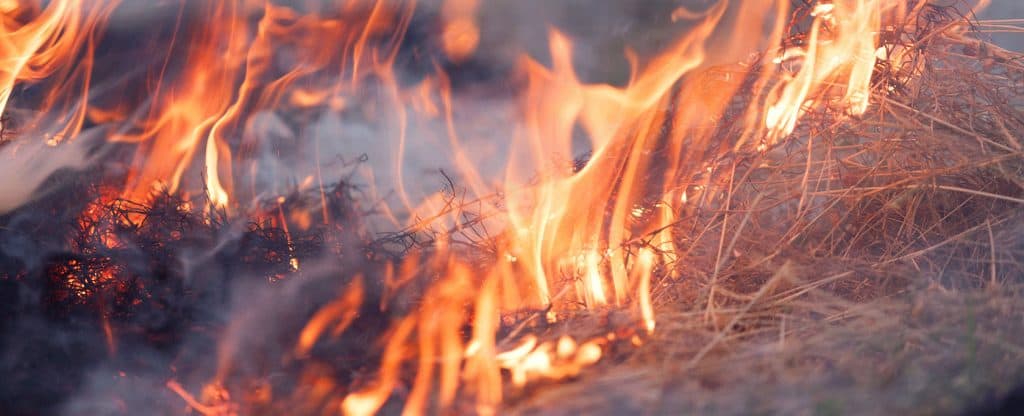Remember, even a small spark can start a fire that spreads quickly. Be sure to follow these safety measures year round.
- Never, ever leave a hot grill, smoker, or backyard fire pit unattended. Always be sure to have a water hose or fire extinguisher nearby, just in case.
- Do not park vehicles on dry grass or tall grass. The temperature of the exterior metal on catalytic converters on vehicles can reach up to 1,000 degrees F.
- Keep garages and storage sheds as clutter free as possible. Highly flammable items such as pesticides, paint, and gas cans for lawnmowers should be stored safely. Consider installing a fire-resistant closet or storage unit for added protection.
Make Your Home Firewise
Based on research by the U.S. Forest Service, a home’s roof and the 30 feet surrounding the structure are most critical when it comes to brush and wildfires. Keeping these areas as clear as possible can make all the difference for firefighters trying to save your home.
Here are some ways to reduce your risk.
Learn more about Firewise landscaping and home construction from the Florida Department of Agriculture and Consumer Services. Also, here’s an interactive map showing current Florida wildfires. The National Fire Protection Association provides helpful tips, plus several educational resources such as the Firewise Toolkit and a Homeowners checklist.
Sources: USDA National Conservation Service, U.S. Fire and Forest Services, and the National Fire Protection Association.
